 September 5, 2019 John E. Ross, KD8IDJ, Editor
| ||||||
Storm Watch Continues Along Southeastern US Coast Amateur Radio Emergency Service (ARES®) teams from Florida to Virginia went on alert this week, even before Hurricane Dorian left the Bahamas and started making its way up the southeastern US coast. As of 1800 UTC on September 5, Dorian was back to a The Florida ARES Net and the statewide SARnet repeater system were to remain activated until Florida emergency managers considered the storm no longer a serious threat. The three ARRL Florida Sections conferred daily this week to assess the situation and coordinate support. In Georgia, an ARES Emergency Net activated on HF, with a variety of coastal, hospital, emergency operations center (EOC) on frequency, and other stations with Georgia's Emergency Management Agency (GEMA). ARES Mutual Assistance Teams are standing by. ARES operators were deployed to two GEMA sites to listen for assistance calls on HF and monitor several frequencies as well as the D-STAR and *Georgia* EchoLink conference node 4544. They were also accepting assistance requests via Winlink. In South Carolina, ARES has been at the ready. The South Carolina Emergency Management Division (SCEMD) radio room was operating 24/7, and Section leadership has been having regular conference calls. In North Carolina, emergency managers are anticipating the worst effects of the storm on Thursday and Friday. Evacuation routes have been established, and North Carolina National Guard personnel activated, along with high-water vehicles and aircraft.
FEMA announced earlier that channels 1 and 2 of the 60-meter band are available, as necessary, for interoperability between federal government stations and US Amateur Radio stations involved in Hurricane Dorian emergency communications. Channel 1 (5332 kHz channel center) is reserved for primary voice traffic on the 5332 kHz channel center, 5330.5 kHz USB, and channel 2 (5348 kHz channel center) for digital traffic, 5346.5 kHz USB with 1.5 kHz offset to center of digital waveform. The ARRL Emergency Response Team remains activated in monitoring mode, as is W1AW. WX4NHC at the National Hurricane Center (NHC) announced formal activation plans for Thursday and Friday. The VoIP Hurricane Net activated Thursday in support. The net asked radio amateurs in affected areas, or who can relay traffic from affected areas, to provide surface weather data and damage reports for relay to WX4NHC. Visit the National Hurricane Center website for the latest official storm information. Tracking Dorian: Hurricane Watch Net Hunkers Down for the Long Haul As of September 5, the Hurricane Watch Net (HWN) has been in continuous operation for Dorian since last Saturday at 2100 UTC, and it plans to remain in operation on 14.325 MHz and 7.268 MHz until further notice, HWN Manager Bobby Graves, KB5HAV, said. The storm made landfall on Grand Bahama Island as a Category 5 storm with maximum sustained winds of 180 MPH, stalling over the northern Bahamas "Members of the Hurricane Watch Net have been reading the latest bulletins and updates as well as making calls to the islands for any reports," Graves said on Wednesday. "However, when a storm is stalled over an area beginning with sustained winds of 180 MPH and slowly dropping to 110 MPH, major catastrophic damage is to be expected." The hurricane claimed at least 7 lives in the Bahamas. "The Hurricane Watch Net will continue to make calls to the Bahamian Islands for survivors and to collect and pass any and all emergency or priority traffic from the area," Graves said on Wednesday. "We are also available to provide back-up communication to official agencies such as emergency operations centers, the Red Cross, and storm shelters in the affected area," Graves said. "We will also be interested to collect and report significant damage assessment data back to FEMA officials stationed in the National Hurricane Center." FCC Grants Temporary Waiver for Use of PACTOR 4 for Hurricane Response and Relief The FCC has granted ARRL's emergency request for a temporary waiver to permit only those radio amateurs active and involved in Hurricane Dorian response and relief efforts to use the PACTOR 4 digital protocol on HF. The waiver is valid through 2100 UTC on Friday, September 6. Section 97.307(f) of the FCC's Amateur Radio Service rules limits digital data emissions of amateur stations operating below 28 MHz to a symbol rate not to exceed 300 baud, and stations operating in the 10-meter band (28.0 - 28.3 MHz) to a symbol rate not to exceed 1200 baud, which precludes PACTOR 4 emissions.
The waiver only applies to radio amateurs directly involved in the hurricane relief efforts involving the US mainland. It does not extend to non-emergency communications. ARRL pointed out that stations involved in Hurricane Dorian response and relief efforts must be able to communicate with one another as well as with federal stations on the five channels on the 5 MHz band involved with the SHARES network and other interoperability partners on those frequencies. ARRL noted that its PACTOR 4 waiver request to the FCC was "without prejudice to the resolution of Docket 16-239 which is presently pending and addresses the rule section discussed herein." The Doctor Will See You Now! "Different Types of Grounds" is the topic of the current (August 29) episode of the ARRL The Doctor is In podcast. Listen...and learn!
Every 2 weeks, your host, QST Editor-in-Chief Steve Ford, WB8IMY, and the Doctor himself, Joel Hallas, W1ZR, will discuss a broad range of technical topics. You can also email your questions to doctor@arrl.org, and the Doctor may answer them in a future podcast. Enjoy ARRL The Doctor is In on Apple iTunes, or by using your iPhone or iPad podcast app (just search for ARRL The Doctor is In). You can also listen online at Blubrry, or at Stitcher (free registration required, or browse the site as a guest) and through the free Stitcher app for iOS, Kindle, or Android devices. If you've never listened to a podcast before, download our beginner's guide. Just ahead: "Coaxial Cable Connectors." QST Congratulates its Key Competition Winners Ingenuity and craftsman abound within the Amateur Radio community, as shown in the results of the 2019 QST Key Competition. Hams have been building their own Morse keys since the dawn of Amateur Radio, and some creations have become legend. The competition sought Morse key and paddle designs in four categories: Straight key, semiautomatic key (bug), paddle, and sideswiper.
Each was a mechanical work of art, but there could only be four winners, who were chosen based on ingenuity of design, ergonomics of operation, and overall craftsmanship.
Participants had to submit their individual keys, which were returned following judging, as well as detailed construction
drawings with dimensions, lists of materials, photos, and written descriptions. More than two dozen entries were submitted, and the judges gathered in late July to evaluate them. The winner in each category will receive $250. The key competition winners' creations will appear in the October 2019 issue of QST. 144 - 146 MHz Removed from French Proposal for Additional Aeronautical Applications The 144 - 146 MHz Amateur Radio segment has been removed from a French proposal to study additional spectrum for Aeronautical Mobile Service (AMS) applications. France had included the band, which comprises the entire 2-meter band in ITU Region 1, for consideration as a European Conference of Telecommunications and Postal Administrations (CEPT) position for World Radiocommunication Conference 2019 (WRC-19). Heading into a CEPT Conference Preparatory Group (CPG) meeting in Turkey last week, France was holding firm on the proposal to have AMS share 144 - 146 MHz with Amateur Radio. The CPG meeting considered CEPT The International Amateur Radio Union (IARU) had called the French proposal for 144 - 146 MHz "unsound" and contended that sharing of the current amateur allocation with AMS radio systems would not be possible "without a significant likelihood of mutual interference." The French spectrum study proposal would have had to gain approval from at least 10 CEPT countries at the CPG meeting -- with not more than 6 opposing -- to appear on the agendas of WRC-19 and WRC-23, where a final decision would be made. Other Amateur Radio-related issues addressed at the CEPT CPG included:
CEPT is one of the six regional telecommunications organizations and is viewed as the most influential. The issues now move to WRC-19 in Egypt this fall for final resolution. IARU will be represented at the international gathering, which gets under way in late October. Read more. The K7RA Solar Update Tad Cook, K7RA, Seattle, reports: Cycle 24 sunspots returned this week, but only for 2 days -- Sunday and Monday -- for a sunspot number of 12. Average daily solar flux increased from 66 last week to 67.4 this week.
Predicted solar flux is 69 on September 5 - 11; 67 on September 12 - 22; 68 on September 23 - October 6, and 67 on October 7 - 19. Predicted planetary A index is 8 on September 5 - 8; 5 on September 9 - 22; 8 on September 23; 5 on September 24 - 25; 10, 35, 44, 24, and 8 on September 25 - 30; 5 on October 1 - 3; 8 on October 4 - 5, and 5 on October 6 - 19. I will be giving a talk at the Western Washington DX Club in Seattle on Tuesday, September 10. Sunspot numbers for August 29 - September 4 were 0, 0, 0, 12, 12, 0, and 0, with a mean of 3.4. The 10.7-centimeter flux was 65.9, 66.5, 66.4, 67.1, 68.8, 68.6, and 68.6, with a mean of 67.4. Estimated planetary A indices were 3, 10, 38, 45, 21, 10, and 12, with a mean of 19.9. The middle latitude A index was 4, 10, 29, 33, 19, 11, and 11, with a mean of 16.7. A comprehensive K7RA Solar Update is posted Fridays on the ARRL website. For more information concerning radio propagation, visit the ARRL Technical Information Service, read "What the Numbers Mean...," and check out K9LA's Propagation Page. A propagation bulletin archive is available. Monthly charts offer propagation projections between the US and a dozen DX locations. Share your reports and observations. Just Ahead in Radiosport
See the ARRL Contest Calendar for more information. For in-depth reporting on Amateur Radio contesting, subscribe to The ARRL Contest Update via your ARRL member profile email preferences. FlexRadio Teams with Raytheon to Develop Airborne HF Radio In a strategic partnership with Raytheon, US Amateur Radio equipment manufacturer FlexRadio has been selected by the US Air Force to adapt its off-the-shelf SmartSDR/FLEX-6000 architecture for HF modernization of airborne communications platforms. The new radio will provide beyond line-of-sight, long-distance communications for air crews. "We are excited to convey that our proven modular direct sampling hardware, Open Waveform API, and IP-based architecture provide a Youngblood said the deal could boost its Amateur Radio and commercial products and services. "While I can't go into all the details, the positive impact to our business processes, infrastructure, intellectual property, and human resources will enhance our amateur/commercial products and services," he said. "So, stay tuned for more amateur product announcements coming soon." Raytheon received a $36 million Project Agreement through an Other Transaction Agreement (OTA) with Consortium Management Group The Raytheon-FlexRadio partnership is one of two recipients for this development program. After the 31-month period of performance, one team will be named to move on to production. "Worldwide high-frequency communications is what our commercial customers do every day, using virtually every mode of operation and type of propagation," Youngblood said. Read more. Concerns Aired that 5G Spectrum Expansion Could Affect Weather Data Collection An April report in Nature magazine says the National Oceanic and Atmospheric Administration (NOAA) and NASA are asking the FCC to work with them to protect frequencies used for Earth observation from interference as 5G rolls out. The FCC in April auctioned the first block of 5G spectrum with minimal protection to other users. The sale reaped nearly $2 billion. Some of the 5G-bound The worry is that NOAA won't be able to detect concentrations of water vapor in the atmosphere accurately. Meteorologists rely on those data to feed into their models, and without it, weather forecasts worldwide could suffer. "Because the United States is such a large communications market, the decisions the government makes about how to deploy 5G are likely to influence global discussions on how to regulate the technology," the Nature article said. The article noted that telecommunications regulators will gather in Egypt in October and November for World Radiocomunication Conference 2019 (WRC-19), where delegates will "hammer out international agreements for which frequencies companies will be able to use for 5G transmissions, and what level of interference with Earth-observation frequencies is acceptable," the magazine said. "Astronomers, meteorologists and other scientists have long worked to share the spectrum with other users, sometimes shifting to different frequencies to prevent conflicts," the article points out. "But 'this is the first time we've seen a threat to what I'd call the crown jewels of our frequencies -- the ones that we absolutely must defend come what may,'" said Stephen English, a meteorologist at the European Centre for Medium-Range Weather Forecasts in the UK.
The FCC auction set a noise limit on the US 5G network of -20 dBW, much noisier than thresholds under consideration most other systems around the world. The European Commission has settled on -42 dBW for 5G base stations; the World Meteorological Organization (WMO) is recommending -55 dBW. "NOAA and NASA have reportedly finished a study on the effects of differing levels of noise interference, but it has not been made public, despite at least one formal request from Congress," Nature reported. The Department of Commerce, which oversees NOAA, "strongly supports the administration's policy to promote US leadership in secure 5G networks, while at the same time sustaining and improving critical government and scientific missions." In Brief...
Upcoming ARRL Section, State, and Division Conventions
Find conventions and hamfests in your area.
. .
Subscribe to...
Free of charge to ARRL members...
| ||||||
.jpg) Category 2 storm, with maximum sustained winds of 110 MPH. It was 115 miles south-southwest of Wilmington, North Carolina, moving north-northeast at 8 MPH.
Category 2 storm, with maximum sustained winds of 110 MPH. It was 115 miles south-southwest of Wilmington, North Carolina, moving north-northeast at 8 MPH. 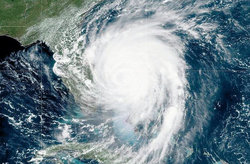 Rain and storm surge have been the primary threats, with extensive flooding reported in coastal counties of Georgia and the Carolinas, coupled with high winds that downed trees and caused power outages.
Rain and storm surge have been the primary threats, with extensive flooding reported in coastal counties of Georgia and the Carolinas, coupled with high winds that downed trees and caused power outages..jpg) for a day and a half before slowly starting to move away.
for a day and a half before slowly starting to move away..jpg) "PACTOR 4 is a data protocol that permits relatively high-speed data transmission in the HF bands, and many amateur stations active in emergency communications preparedness are capable of using this protocol," ARRL explained. The higher-data rates offered by PACTOR 4 are "critical to sending hurricane relief communications, including lists of needed and distributed supplies," ARRL told the FCC.
"PACTOR 4 is a data protocol that permits relatively high-speed data transmission in the HF bands, and many amateur stations active in emergency communications preparedness are capable of using this protocol," ARRL explained. The higher-data rates offered by PACTOR 4 are "critical to sending hurricane relief communications, including lists of needed and distributed supplies," ARRL told the FCC.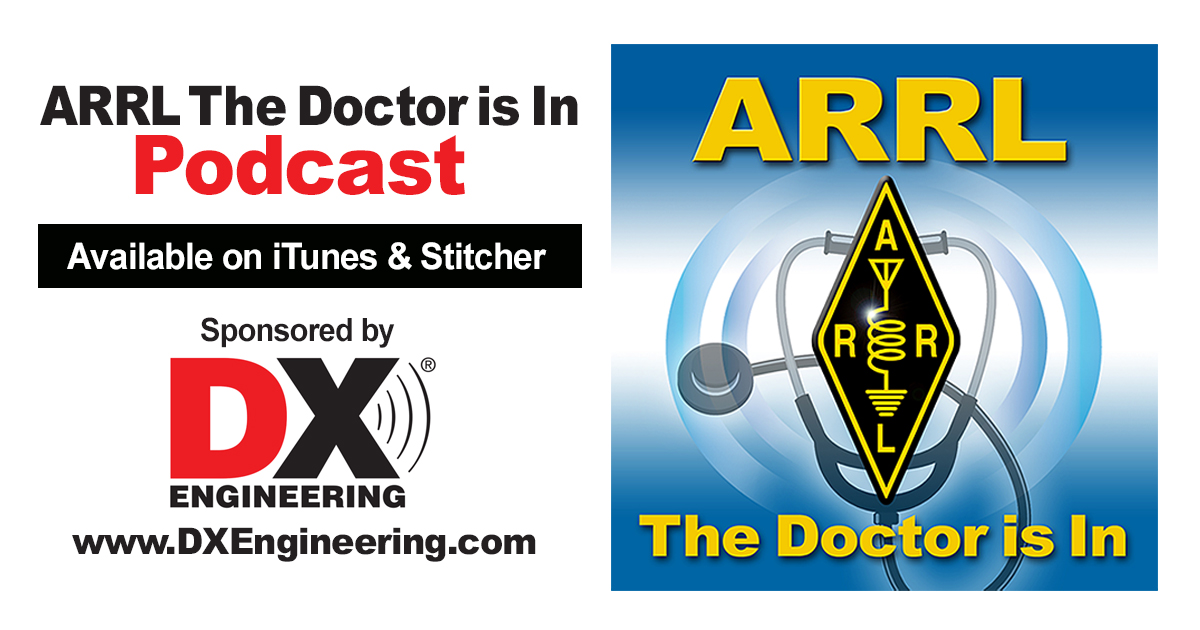 Sponsored by
Sponsored by .jpg)
.jpg)
.jpg)
.jpg)
 ECC positions on this and other issues for WRC-19.
ECC positions on this and other issues for WRC-19.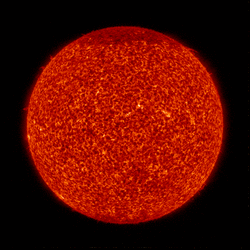 Radiation from a coronal hole increased the average planetary A index from 5.7 last week to 19.9 this week, with the level on Saturday and Sunday at 38 and 45. The Fairbanks, Alaska, College A index reached 59 and 86, and at one point on Sunday the K index was 8. Measured every 3 hours, and used to calculate the daily A index, the K index had not previously reached 8 since August and September in 2018.
Radiation from a coronal hole increased the average planetary A index from 5.7 last week to 19.9 this week, with the level on Saturday and Sunday at 38 and 45. The Fairbanks, Alaska, College A index reached 59 and 86, and at one point on Sunday the K index was 8. Measured every 3 hours, and used to calculate the daily A index, the K index had not previously reached 8 since August and September in 2018.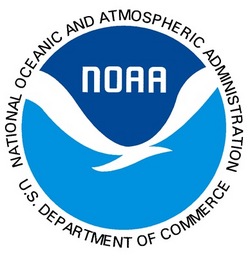 frequencies are close to those used by satellites for Earth observations, and meteorologists have expressed fears that 5G transmissions could interfere with their data collection.
frequencies are close to those used by satellites for Earth observations, and meteorologists have expressed fears that 5G transmissions could interfere with their data collection.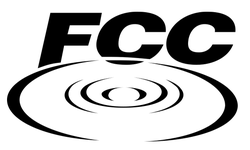 The recent FCC auction focused on two bands of spectrum -- between 24.25 and 24.45 GHz and between 24.75 and 25.25 GHz. Wireless equipment transmitting near the lower end of that range could interfere with the 23.8 GHz water-vapor measurement. Nature said the FCC did not respond to its request for comment on the matter.
The recent FCC auction focused on two bands of spectrum -- between 24.25 and 24.45 GHz and between 24.75 and 25.25 GHz. Wireless equipment transmitting near the lower end of that range could interfere with the 23.8 GHz water-vapor measurement. Nature said the FCC did not respond to its request for comment on the matter.-logo.jpg) September is National Preparedness Month. The Federal Emergency Management Agency (FEMA) sponsors
September is National Preparedness Month. The Federal Emergency Management Agency (FEMA) sponsors .jpg) Applications
Applications.jpg) The Citrus Belt Amateur Radio Club of San Bernardino, California will host the 20th annual Route 66 On the Air Special Event, September 7 - 15. The event commemorates the 1926 construction of the famous Route 66, the country's first major improved highway linking the US heartland with the west coast. Twenty stations will be on the air along the route, two of them as rovers on the highway between Santa Monica, California, and Chicago, Illinois. All 20 stations will employ 1 × 1 call signs. Operating frequencies will be: CW -- 3.533, 7.033, 10.110, 14.033, 18.080, 21.033, 24.900, 28.033, and 50.033 MHz; SSB -- 3.866, 7.266, 14.266, 18.164, 21.366, 24.966, 28.446, and 50.166 MHz, and digital -- 3.573, 7.074, 10.136, 14.074, 18.100, 21.074, 24.915, and 28.074 MHz. Radio amateurs traveling on Route 66 are encouraged to take part. Participating clubs will have their own distinctive commemorative QSLs.
The Citrus Belt Amateur Radio Club of San Bernardino, California will host the 20th annual Route 66 On the Air Special Event, September 7 - 15. The event commemorates the 1926 construction of the famous Route 66, the country's first major improved highway linking the US heartland with the west coast. Twenty stations will be on the air along the route, two of them as rovers on the highway between Santa Monica, California, and Chicago, Illinois. All 20 stations will employ 1 × 1 call signs. Operating frequencies will be: CW -- 3.533, 7.033, 10.110, 14.033, 18.080, 21.033, 24.900, 28.033, and 50.033 MHz; SSB -- 3.866, 7.266, 14.266, 18.164, 21.366, 24.966, 28.446, and 50.166 MHz, and digital -- 3.573, 7.074, 10.136, 14.074, 18.100, 21.074, 24.915, and 28.074 MHz. Radio amateurs traveling on Route 66 are encouraged to take part. Participating clubs will have their own distinctive commemorative QSLs. 







